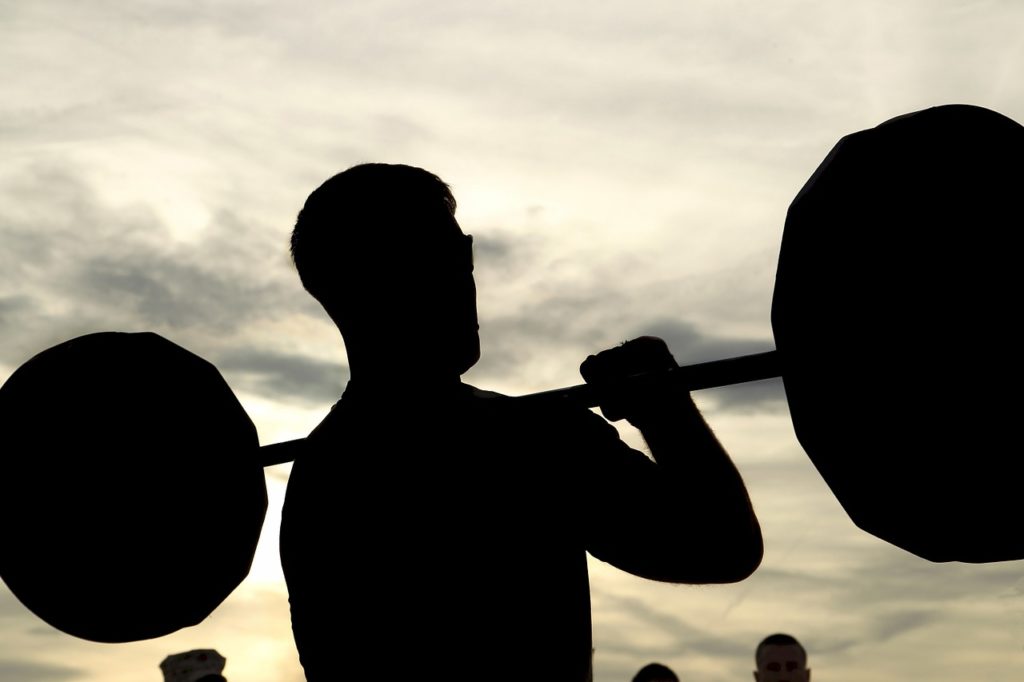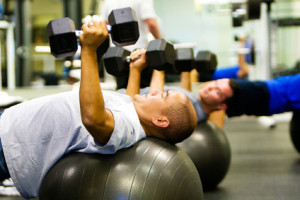- Calls to this hotline are currently being directed to Within Health or Eating Disorder Solutions
- Representatives are standing by 24/7 to help answer your questions
- All calls are confidential and HIPAA compliant
- There is no obligation or cost to call
- Eating Disorder Hope does not receive any commissions or fees dependent upon which provider you select
- Additional treatment providers are located on our directory or samhsa.gov
Dude, You Have an Eating Disorder

Contributor: Andrew Walen, LCSW-C, LICSW, CEDS, Founder and Executive Director of The Body Image Therapy Center
Yes, males can develop an eating disorder. It may not seem like it, as you rarely hear about it. Males do not seek treatment as often as others. Their behaviors are different. Their language is different. But the negative impact on physical, mental, social, and occupational aspects of life is the same as everyone else.
As described by the majority of people who seek care for an eating disorder, body image concerns are the most common factor in developing disordered eating and exercise behaviors in males. This generally stems from adolescent bullying due to their body size and shape.
The difference is males will focus on muscularity and leanness rather than thinness and weight, as seen in females. In fact, more than 90% of adolescent males report exercising primarily to increase muscle mass or tone, and up to 15% will use appearance and performance-enhancing drugs, including anabolic steroids. But it gets far more nuanced than that.
Body Dissatisfaction
Males tend to fall into two categories when worrying about body image: not big enough and not lean enough. Male body dissatisfaction and the pathological desire to increase muscle mass was originally conceptualized as the opposite of anorexia, thus the popularization of the term “reverse anorexia” a few decades ago and what is now referred to as Muscle Dysmorphia.
It is marked by an underestimation of actual muscularity and resultant stress about this false perception, just as seen in cases of anorexia where an individual has little awareness of their state of emaciation. The complex and obsessive behaviors around dietary restraint and exercise seen in both anorexia and muscle dysmorphia are quite similar. The specific methods of reaching their respective body image goals are quite different, though.
For males, it is normal to see long hours of muscle-building regimes (rather than exercise for weight loss) combined with rigid adherence to high protein diets, body checking, and choosing exercise and food routines over other aspects of life. If forced to miss a workout, the distress level is high. Exercising despite injury or illness is commonplace.
But unlike what is typically seen in females, missing a meal is a cause for distress. Getting in enough calories and the right kind of macro- and micro-nutrients to gain muscle mass and improve leanness is prioritized over any sense of hunger or fullness cues. Restriction is typically only found in avoidance of “bad foods” that would negate leanness.
The restrictive and rigid quality of this experience with food combined with compulsive exercise is what marks the difference between a person who is devoted to muscle building and someone who has developed an eating disorder. Studies have shown about 26% of males report rigid dietary rules as equally or more important than the exercise component.
It can be a gray area as muscle-building supplements and product usage and a high protein diet are normalized in today’s culture. The significant emotional and cognitive distress for having to deviate from a plan, or the continuation of the behaviors despite physical, mental and social consequences, are keys to identifying those who need clinical help.
Mood Regulation

Researchers also found males who rely on exercise for mood regulation show a pronounced lack of emotional awareness, limited emotion regulation strategies, and reduced emotional clarity. The trouble here is males are accustomed to using self-regulation tools rather than seeking outside resources for help.
To seek help would be seen as unmasculine and diametrically opposed to their core gender beliefs. It is also why returning to non-compulsive exercise is often more fraught with difficulty than in females, as that would require having those outside resources other than exercise for mood regulation.
Perpetuating rigid rules as a masculine norm
As we see in media directed to a female audience, there is a strong relationship between idealizing the thin body and the development of eating disorder behavior. The same is found in media directed at males. From Geico commercials with “scrawny arm Rob Lowe” to muscle-building videos from The Rock on YouTube, males are inundated with messages that the ideal body is a V-shaped torso with ripped biceps and quads and six-pack abs.
Messages on social media include “Lose the pencil neck, bro,” and “You don’t wanna be that skinny-ass nerd in high school, bro. Put your handbag down and hit the gym.”
Putting exercise in above all else is noted in comments such as “Don’t skip the gym just because it’s your mom’s birthday. Don’t cheat on yourself and skip a workout.”
“Your training regime needs to be like your job. You clock in, and you clock out. Every. Single. Day. Without exception.”
“If you have an injury, you will probably want to do whatever you can to make sure you don’t miss a workout. If you take time off, you will lose much of what you worked hard to build. Train through your injuries. Tony Romo played with a punctured lung. What’s your excuse?”
Even normalizing using steroids is common such as, “Testosterone and steroids are naturally produced in your body and taking a little booster doesn’t hurt anyone. Hell, it’s good for you!”
This all starts to sound like pro-anorexia websites directed at females, just a bit ballsier as it were.
Males still present with typical anorexia, bulimia and binge eating disorder
Males do present with the commonly described experience of thinness-oriented anorexic and bulimic behaviors. Males who identify as gay or bi-sexual as well as transgender individuals are found to have a stronger connection to thinness and weight-focused beliefs compared to cisgender heterosexual males.
There are also a number of cisgender heterosexual males who also will report typical eating disorder pathology, though they also report a stronger connection to feminine norms such as willingness to seek support, higher emotional connection, and lower need for dominance. The majority of males, however, are likely to present with muscularity-oriented body image concerns.
Of note, gay or bi-sexual males are about three times more likely to develop an eating disorder, and transgender individuals about five times more likely than the general male population. Their presentation is also more predictive based on their affiliation with gender norms compared to gender or sexuality.
Binge eating disorder
Dude, you have an eating disorder
The hardest part about identifying if someone has an eating disorder is that the behaviors and body image thoughts are so culturally normed. It seems our lexicon is as littered with descriptions of working out and getting fit as Eskimos have for types of snow.
At every gym, you will find people fighting for space and opportunity to use machines and weights, grunting away and dripping with sweat. There even were protests across the country during COVID’s worst days to open gyms as a “right” to exercise and not just to save the businesses and livelihoods of gym owners and their staff. That is how ingrained gym and fitness culture is now.
Interestingly, you do not see as many ads for products and programs for men to lose weight. After countless failures to create a market, businesses have mostly learned not to throw good money after bad.
Weight loss is just not part of the pathology. But you see ads for anything that speaks to masculinity from muscle size and shape (the earliest adopter being Weider products for muscle building powders) to penis size and shape (Extenz to Viagra).
There is even a soap commercial out from Dr. Squatch saying, “don’t smell like mommy’s little man,” and suggesting that other soap leads to low sperm count. “Your poor balls, all dry and empty and sad.” You cannot make this stuff up.
There is nothing wrong with a drive for muscularity any more than there is something wrong with a drive for cardiac heart health through aerobic exercise. It is when other aspects of life are affected, such as your health, mood, relationships, and work, that it is time to take real stock of what is going on. If any of this sounds like you – dude, you have an eating disorder.

About the Author:
Andrew Walen, LCSW-C, LICSW, CEDS, is the founder and Executive Director of The Body Image Therapy Center in Maryland, and D.C. He is a Certified Eating Disorder Specialist, psychotherapist, author, speaker, and advocate in the eating disorders field, with expertise in males with eating disorders.
Andrew is the immediate past-President of the National Association for Males with Eating Disorders (NAMED), which merged with the National Eating Disorders Association (NEDA) in November 2019. He currently serves as NEDA’s Senior Advisor on Males with Eating Disorders. He is also a past founding board member of the Binge Eating Disorder Association (BEDA). He has appeared on The Today Show, was featured in The New York Times, USA Today, Men’s Health, and many other national and local media outlets as an expert in the field of eating disorders and body image. In addition, he has authored numerous articles and presented workshops at national and international eating disorder conferences. His book Man Up to Eating Disorders, which is a memoir and self-help book directed at males with eating disorders, was published May 2014.
Andrew is a magna cum laude graduate of the University of Tennessee College of Social Work in Nashville. He also graduated from the Berklee College of Music and is a published singer/songwriter/multi-
The opinions and views of our guest contributors are shared to provide a broad perspective on eating disorders. These are not necessarily the views of Eating Disorder Hope, but an effort to offer a discussion of various issues by different concerned individuals.
We at Eating Disorder Hope understand that eating disorders result from a combination of environmental and genetic factors. If you or a loved one are suffering from an eating disorder, please know that there is hope for you, and seek immediate professional help.
Published March 1, 2021, on EatingDisorderHope.com
Reviewed & Approved on March 1, 2021, by Jacquelyn Ekern MS, LPC

